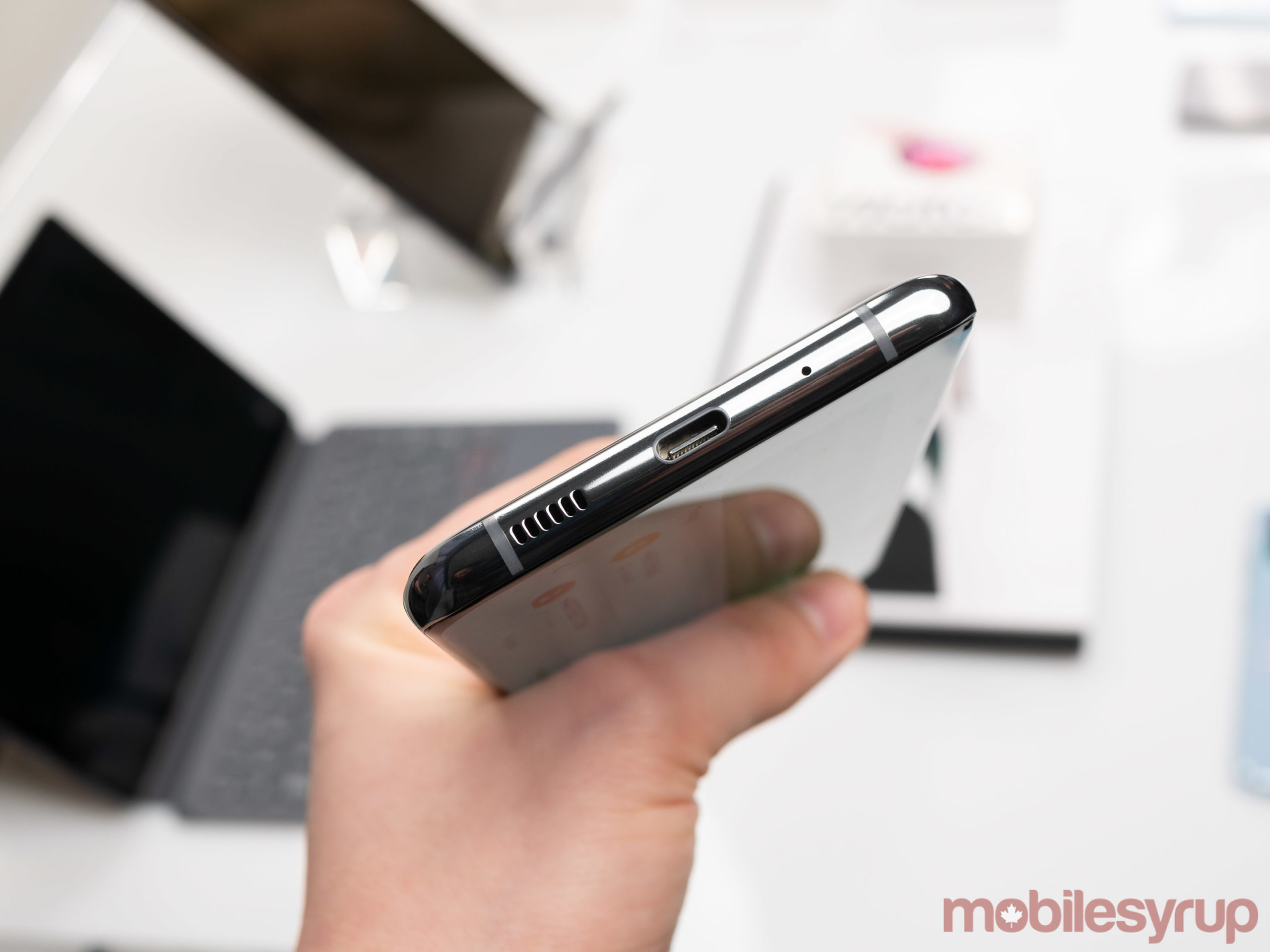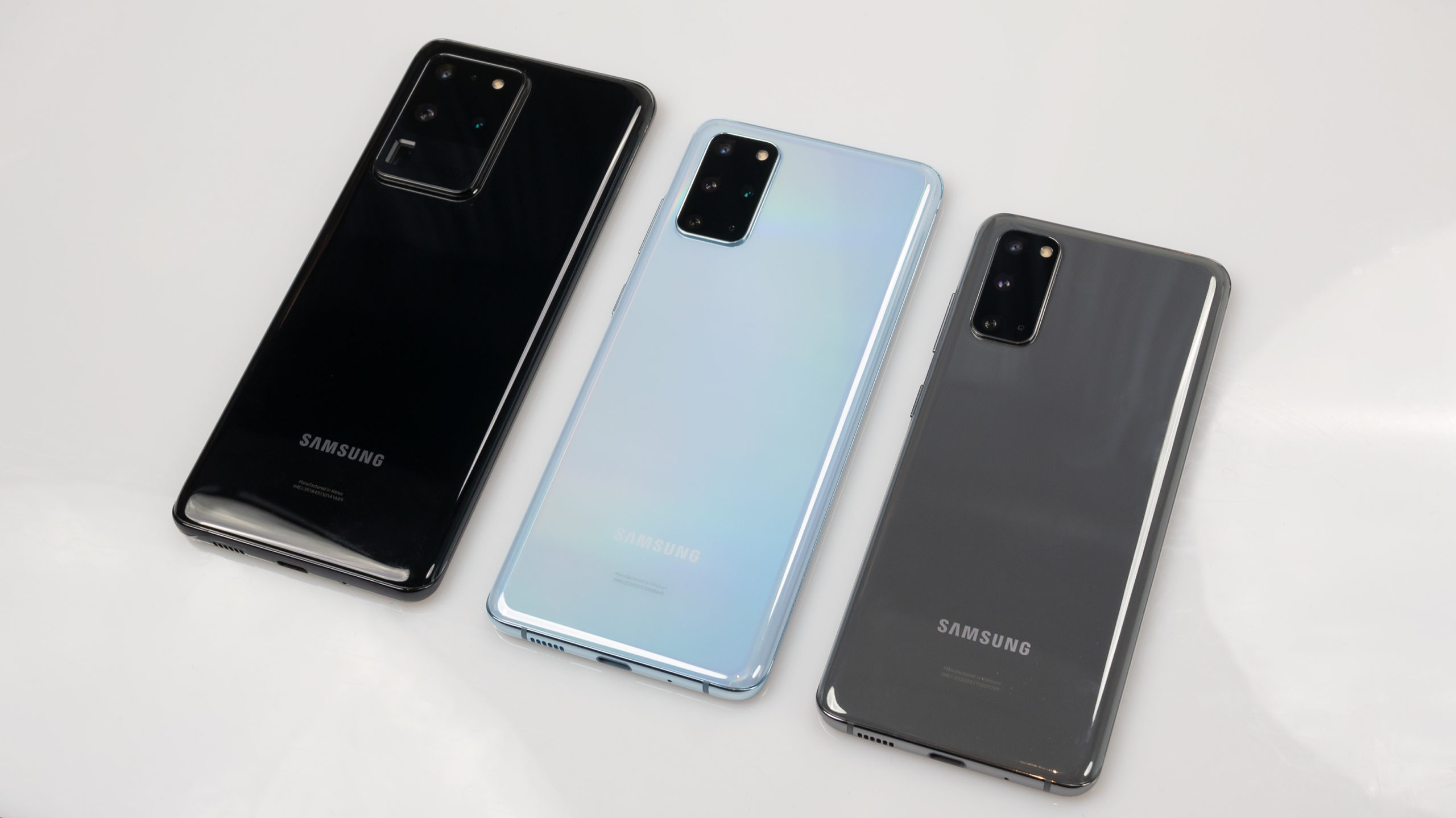
One thing is clear about Samsung’s 2020 smartphone lineup: the tech giant wants the Galaxy S20, the S20+ and S20 Ultra to be photography powerhouses.
While Samsung’s S Series has always featured a great camera, it’s arguably fallen behind its competitors in the space in recent years, notably Apple and Google.
With its latest S series smartphones, Samsung aims to regain its one-time photography crown with several interesting new features.
Samsung Galaxy S20
Samsung Galaxy S20+
Samsung Galaxy S20 Ultra
Display
6.2-inch Curved Dynamic AMOLED, 3,200 x 1,440 pixels, 20:9 aspect ratio, 120Hz display
6.7-inch Curved Dynamic AMOLED, 3,200 x 1,440 pixels, 20:9 aspect ratio, 120Hz display
6.9-inch Curved Dynamic AMOLED, 3,200 x 1,440 pixels, 20:9 aspect ratio, 120Hz display
Processor
Snapdragon 865
Snapdragon 865
Snapdragon 865
RAM
12GB of RAM
12GB of RAM
12GB of RAM, 16GB of RAM
Storage
128GB
128GB, 512GB
128GB, 512GB
Dimensions (in.)
152 x 68 x 7.9mm
162 x 74 x 7.8mm
167 x 76 x 8.8mm
Weight
164g
188g
221g
Rear Facing Camera
12.2-megapixel (wide) + 64-megapixel (telephoto) + 12-megapixel (ultra-wide angle)
12.2-megapixel (wide) + 64-megapixel (telephoto) + 12-megapixel (ultra-wide angle)+ TOF depth sensor
108-megapixel (wide) + 48-megapixel (telephoto) + 12-megapixel (ultra-wide angle) + TOF depth sensor
Front Facing Camera
10-megapixel
10-megapixel
40-megapixel
OS
Android 10
Android 10
Android 10
Battery
4,000mAh
4,500mAh
5,000mAh
Network Connectivity
GSM/HSPA/LTE/5G
GSM/HSPA/LTE/5G
GSM/HSPA/LTE/5G
Sensors
Fingerprint (in-display), accelerometor, gyro, proximity, compass
Fingerprint (in-display), accelerometor, gyro, proximity, compass
Fingerprint (in-display), accelerometor, gyro, proximity, compass
SIM Type
Nano SIM
Nano SIM
Nano SIM
Launch Date
March 6, 2020
March 6, 2020
March 6, 2020
Misc
Colours: Cosmic Black, Cosmic Grey, Cloud Blue | 120Hz display, 240Hz touch sample rate
Colours: Cosmic Grey, Cosmic Black, Cloud Blue | 120Hz display, 240Hz touch sample rate
Colours: Cosmic Grey, Cosmic Black | 120Hz display, 240Hz touch sample rate
Display
Samsung Galaxy S20
6.2-inch Curved Dynamic AMOLED, 3,200 x 1,440 pixels, 20:9 aspect ratio, 120Hz display
Samsung Galaxy S20+
6.7-inch Curved Dynamic AMOLED, 3,200 x 1,440 pixels, 20:9 aspect ratio, 120Hz display
Samsung Galaxy S20 Ultra
6.9-inch Curved Dynamic AMOLED, 3,200 x 1,440 pixels, 20:9 aspect ratio, 120Hz display
Processor
Samsung Galaxy S20
Snapdragon 865
Samsung Galaxy S20+
Snapdragon 865
Samsung Galaxy S20 Ultra
Snapdragon 865
RAM
Samsung Galaxy S20
12GB of RAM
Samsung Galaxy S20+
12GB of RAM
Samsung Galaxy S20 Ultra
12GB of RAM, 16GB of RAM
Storage
Samsung Galaxy S20
128GB
Samsung Galaxy S20+
128GB, 512GB
Samsung Galaxy S20 Ultra
128GB, 512GB
Dimensions (in.)
Samsung Galaxy S20
152 x 68 x 7.9mm
Samsung Galaxy S20+
162 x 74 x 7.8mm
Samsung Galaxy S20 Ultra
167 x 76 x 8.8mm
Weight
Samsung Galaxy S20
164g
Samsung Galaxy S20+
188g
Samsung Galaxy S20 Ultra
221g
Rear Facing Camera
Samsung Galaxy S20
12.2-megapixel (wide) + 64-megapixel (telephoto) + 12-megapixel (ultra-wide angle)
Samsung Galaxy S20+
12.2-megapixel (wide) + 64-megapixel (telephoto) + 12-megapixel (ultra-wide angle)+ TOF depth sensor
Samsung Galaxy S20 Ultra
108-megapixel (wide) + 48-megapixel (telephoto) + 12-megapixel (ultra-wide angle) + TOF depth sensor
Front Facing Camera
Samsung Galaxy S20
10-megapixel
Samsung Galaxy S20+
10-megapixel
Samsung Galaxy S20 Ultra
40-megapixel
OS
Samsung Galaxy S20
Android 10
Samsung Galaxy S20+
Android 10
Samsung Galaxy S20 Ultra
Android 10
Battery
Samsung Galaxy S20
4,000mAh
Samsung Galaxy S20+
4,500mAh
Samsung Galaxy S20 Ultra
5,000mAh
Network Connectivity
Samsung Galaxy S20
GSM/HSPA/LTE/5G
Samsung Galaxy S20+
GSM/HSPA/LTE/5G
Samsung Galaxy S20 Ultra
GSM/HSPA/LTE/5G
Sensors
Samsung Galaxy S20
Fingerprint (in-display), accelerometor, gyro, proximity, compass
Samsung Galaxy S20+
Fingerprint (in-display), accelerometor, gyro, proximity, compass
Samsung Galaxy S20 Ultra
Fingerprint (in-display), accelerometor, gyro, proximity, compass
SIM Type
Samsung Galaxy S20
Nano SIM
Samsung Galaxy S20+
Nano SIM
Samsung Galaxy S20 Ultra
Nano SIM
Launch Date
Samsung Galaxy S20
March 6, 2020
Samsung Galaxy S20+
March 6, 2020
Samsung Galaxy S20 Ultra
March 6, 2020
Misc
Samsung Galaxy S20
Colours: Cosmic Black, Cosmic Grey, Cloud Blue | 120Hz display, 240Hz touch sample rate
Samsung Galaxy S20+
Colours: Cosmic Grey, Cosmic Black, Cloud Blue | 120Hz display, 240Hz touch sample rate
Samsung Galaxy S20 Ultra
Colours: Cosmic Grey, Cosmic Black | 120Hz display, 240Hz touch sample rate
It’s zoom time
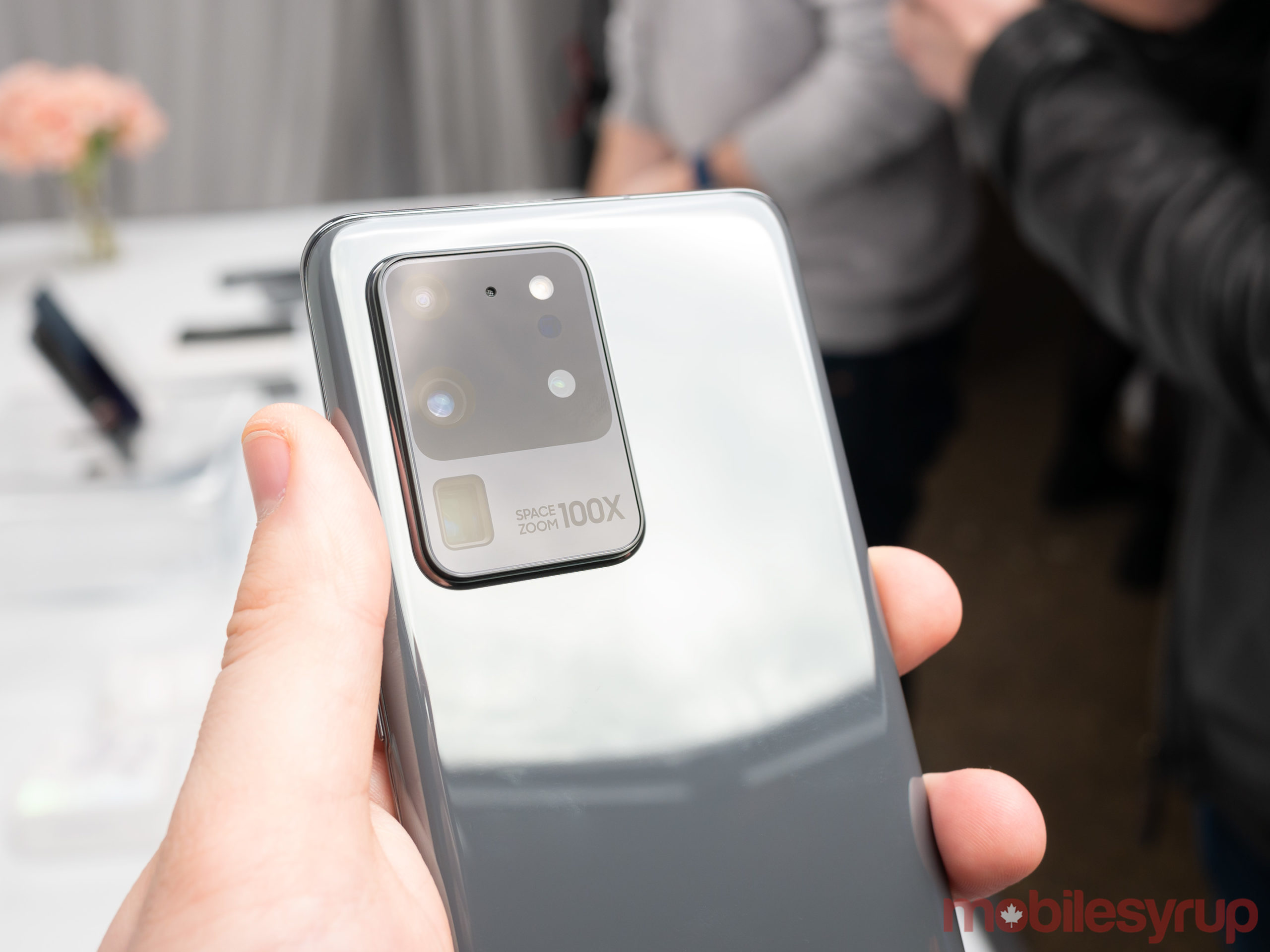
First, there’s the 6.2-inch S20 — the entry-level phone that in some ways replaces last year’s well-received S10e — then there’s the 6.7-inch S20+ and finally, the highest-end S20 Ultra, which comes in at a sizable 6.9 inches. To put the Ultra’s size in perspective, it’s the largest phone to launch in Canada, it’s bigger than last year’s 6.5-inch S10+ and even the Note 10+, which measured in at 6.8-inches.
While all three phones are very similar, they also include several notable differences.
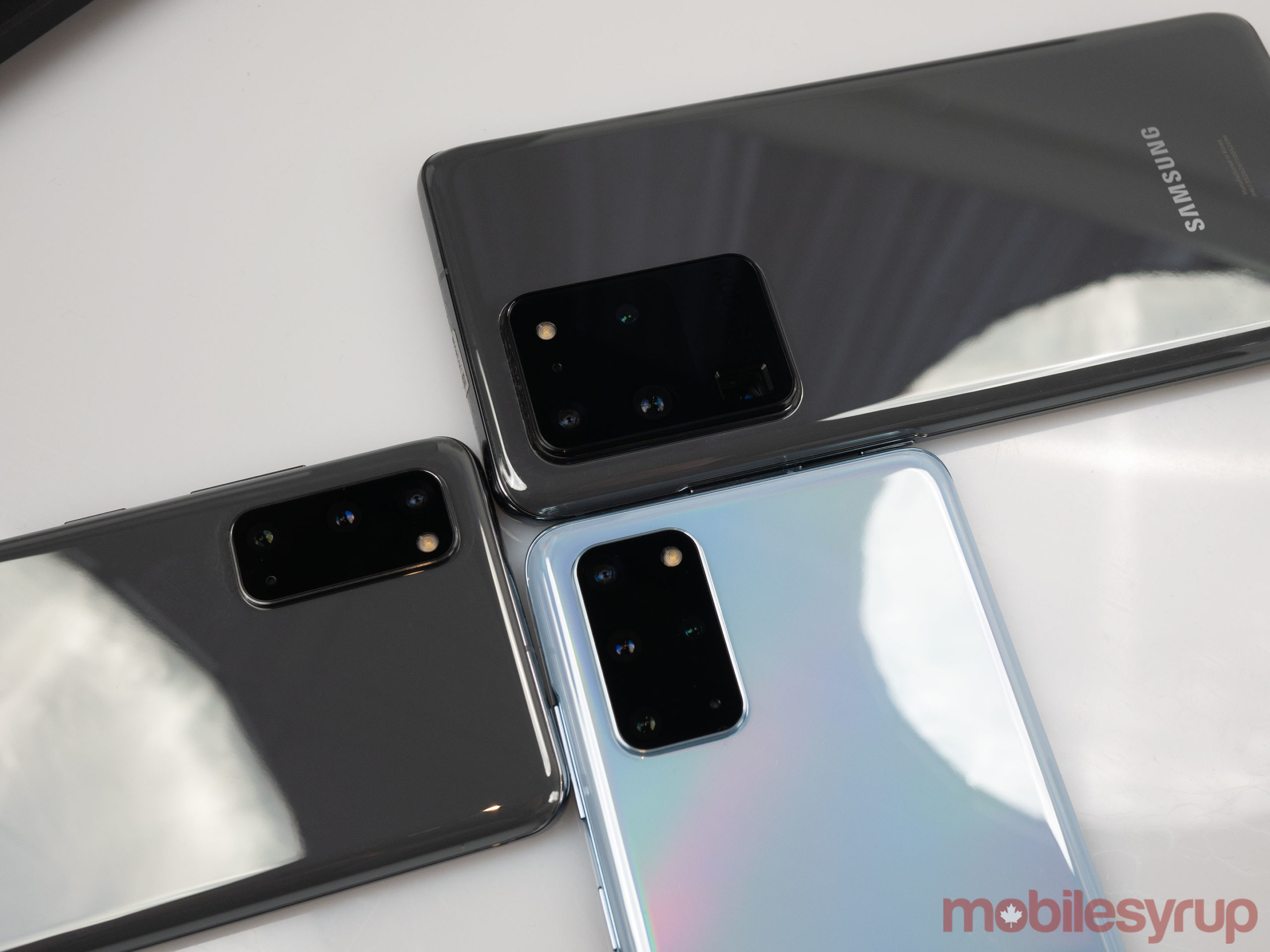
For example, The Galaxy S20 Ultra features a massive 48-megapixel (telephoto) ‘Space Zoom’ lens allowing for up to 100x digital zoom. I spent a very brief amount of time playing with Space Zoom and found that while it’s undeniably impressive a smartphone is capable of this level of magnification, 100x photos were blurry, grainy and generally didn’t look that great.
Similar to the Huawei P30 Pro’s 50x zoom, it’s likely there’s a sweet spot where the image is magnified, but that the quality still hits an acceptable level. There’s also interesting technology going on in the background where the pixels in the Space Zoom lens sensor get smaller and larger depending on lighting conditions.
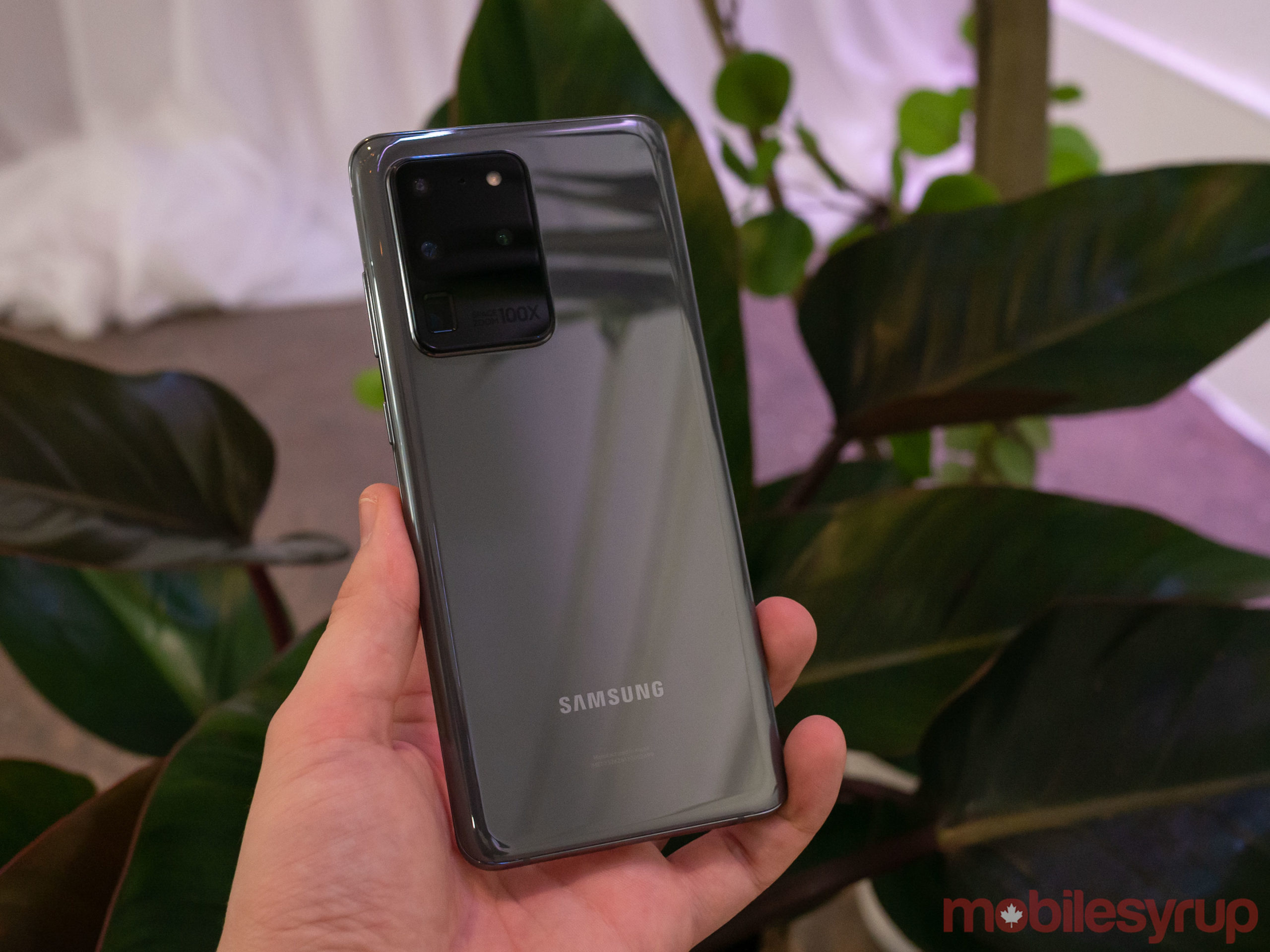
Rounding out the Ultra’s lenses is a 108-megapixel wide-angle, a 12-megapixel ultra-wide shooter and a time-of-flight sensor. The phone’s selfie shooter has also been increased to 40-megapixels, compared to 10-megapixels in the S20 and S20+. Though I didn’t spend much time testing out the selfie shooter, it’s nice to see a smartphone manufacturer placing an emphasis on a smartphone’s front-facing camera.
Speaking of the latter two devices, the S20 and S20+ feature a 12-megapixel wide shooter, a 64-megapixel telephoto camera and a 12-megapixel ultrawide camera. That said, out of these two only the S20+ includes a 3D-sensing time-of-flight sensor.
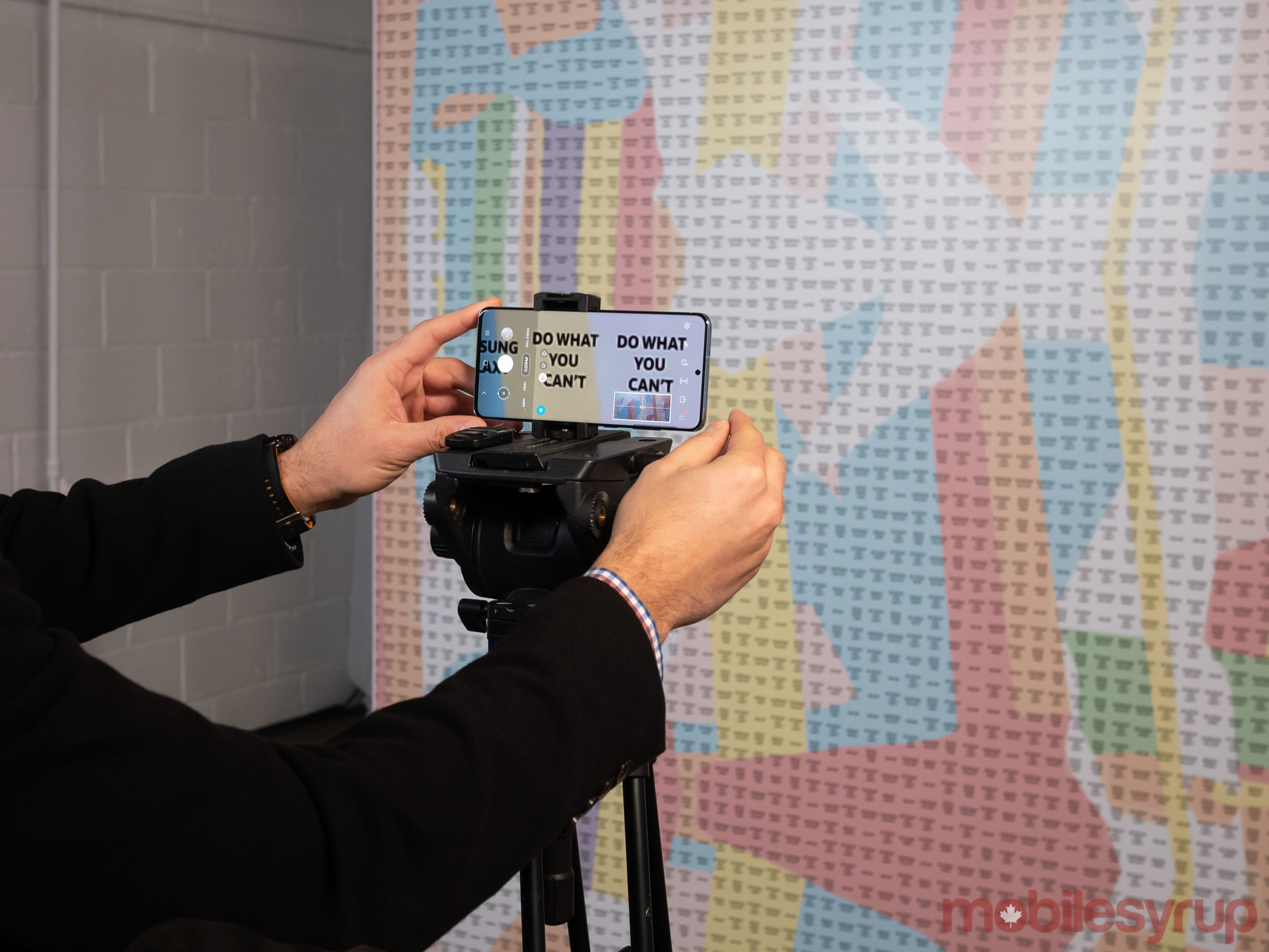
Sticking with this year’s focus on photography and video, all Galaxy S20 series phones can now shoot 8K video, have improved ‘Super Steady’ stabilization and feature a Pro video shooting mode that includes manual controls similar to a DSLR.
There’s also a notable new camera software feature this time around. ‘Single Take Mode’ automatically captures several photos and videos that you can then pick from later. This feature could be handy for anyone looking to streamline how they create photos and videos from family events. It’s unclear if this feature will eventually make its way to other Samsung smartphones, but for now, it’s exclusive to the S20 series.
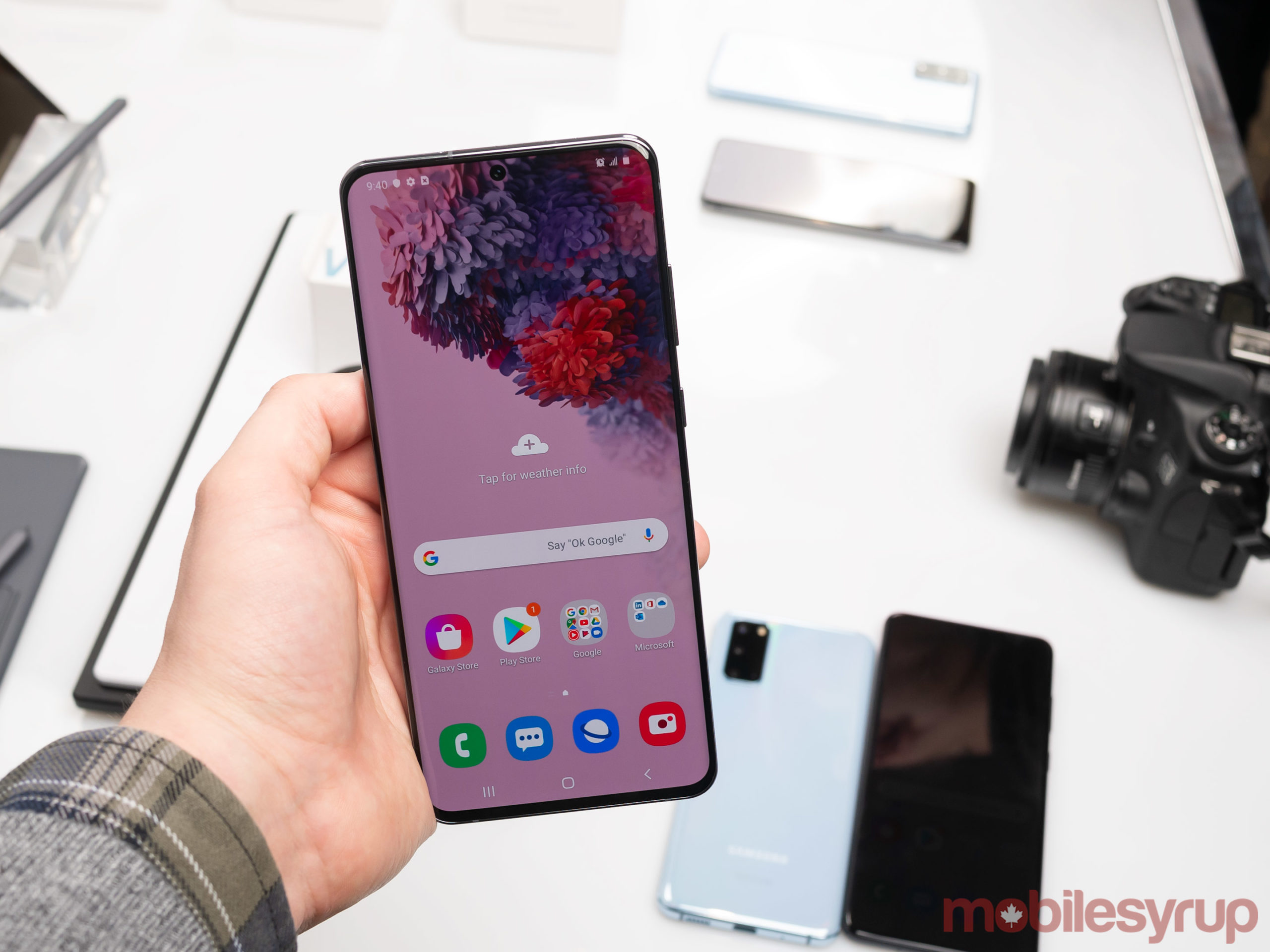
For me, the main question surrounding the S20 series’ photography capabilities is how Samsung is handling image processing. Do they still look over-processed and saturated, or has Samsung shifted the way its lenses deal with images on the post-processing side of things? It’s also unclear if low-light performance has been improved over last year’s S10, which struggled under darker conditions.
I haven’t spent enough time with the Galaxy S20 yet to know if this has actually changed.
Silky smooth
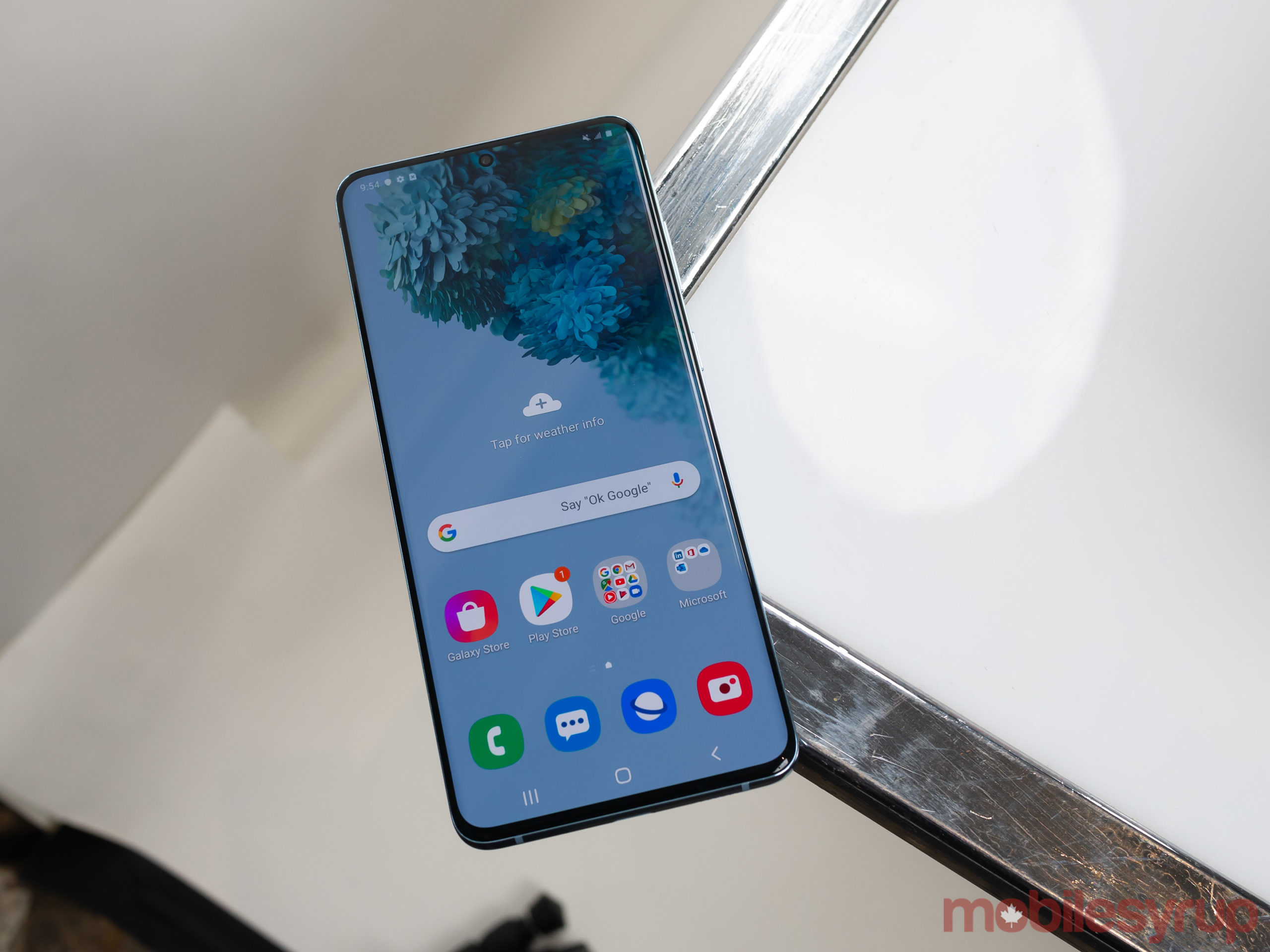
Beyond photography, there are other worthwhile new features this year with the S20, including a 120Hz dynamic AMOLED display that features 240Hz touch sensor technology. Similar to other phones that feature high display refresh rates like Asus’ ROG Phone II, the S20’s screen looks buttery smooth and feels incredibly responsive.
120Hz displays are the type of technology that might be difficult to notice at first, but once you do, it’s challenging to go back to a smartphone that doesn’t feature a high refresh rate.
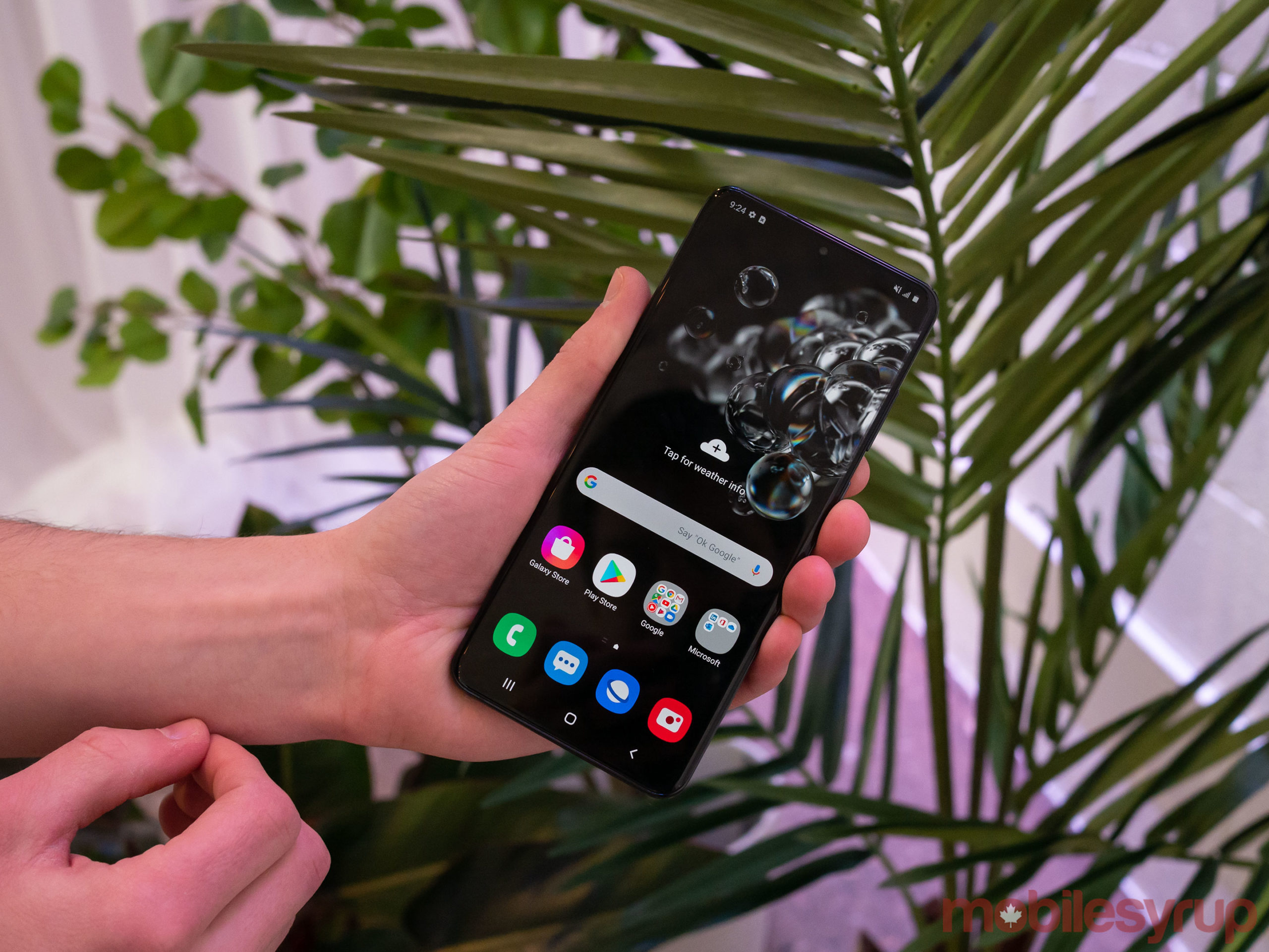
In the context of Canada, it’s important to note the S20, S20+ and S20 Ultra will be the first 5G-enabled smartphones available in the country. To be clear, this is just future-proofing right now since no Canadian carrier’s 5G network is publically available yet.
Given the spectrum required for 5G use hasn’t even been auctioned by the government, it’s unlikely that the next-generation wireless technology will even be available before 2021.
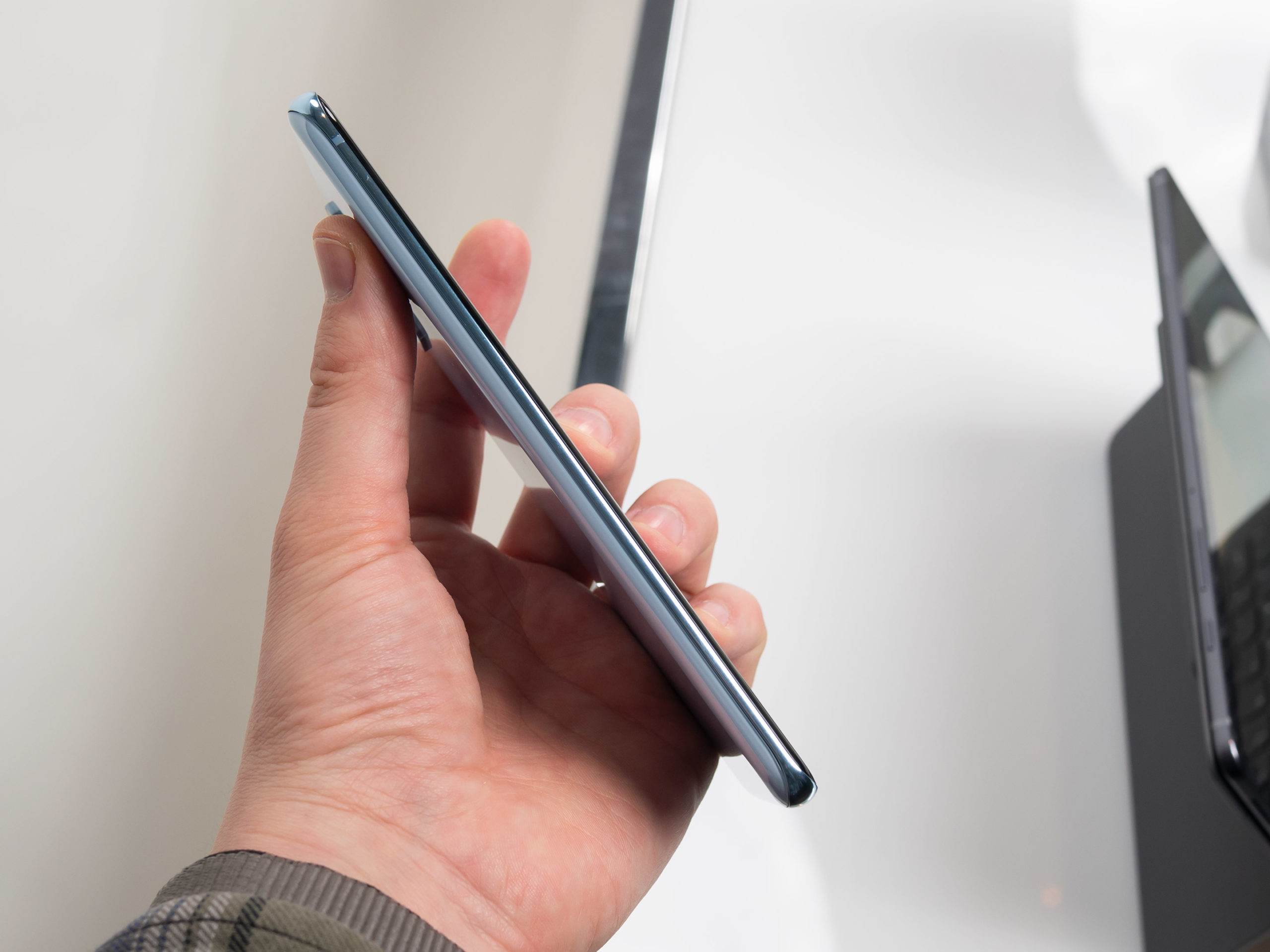
Other specs include a microSD card slot, HDR 10+ support, the return of the ultrasonic in-display fingerprint sensor and Qualcomm’s Snapdragon 865 processor, the hardware company’s latest processor. Regarding RAM, the Ultra features either 128GB or 512GB of internal storage, coupled with 12GB of RAM.
On the other hand, the S20 comes in a 128GB variant with 12GB of RAM, with the S20+ being available in 128GB/512 GB with 12GB of RAM.
Big bumps
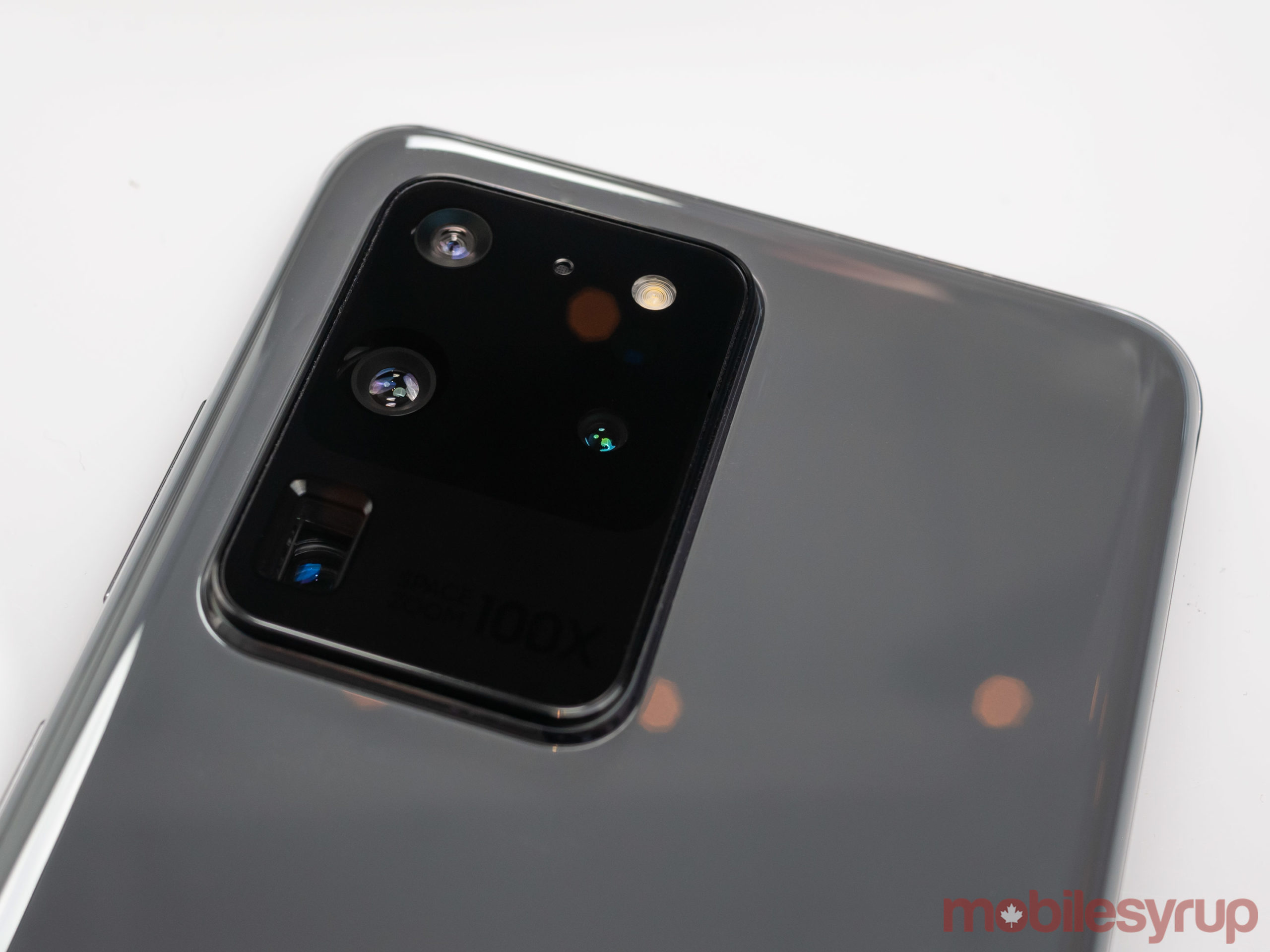
With the S20, the now-familiar look of the Galaxy S series has also gone largely unchanged, though there are a few notable differences this time around.
For instance, the front-facing hole-punch camera has shifted to the centre-top of the display, and there’s also now a sizable, instantly recognizable camera bump on its rear. The Ultra has the biggest bump thanks to its extra ‘Space Zoom’ lens, but all three camera bumps share the same design language.
The edges of the phone still feature curved glass coupled with sleek looking stainless steel and overall, it’s still a very premium, high-quality looking smartphone. Regarding colours, ‘Cloud Blue’ is by far this year’s most attractive option, followed by the new ‘Cosmic Gray’ colour. ‘Cosmic Black’ looks fine, but in an industry increasingly full of bright, inviting looking smartphones, the dark colour comes off as stark.
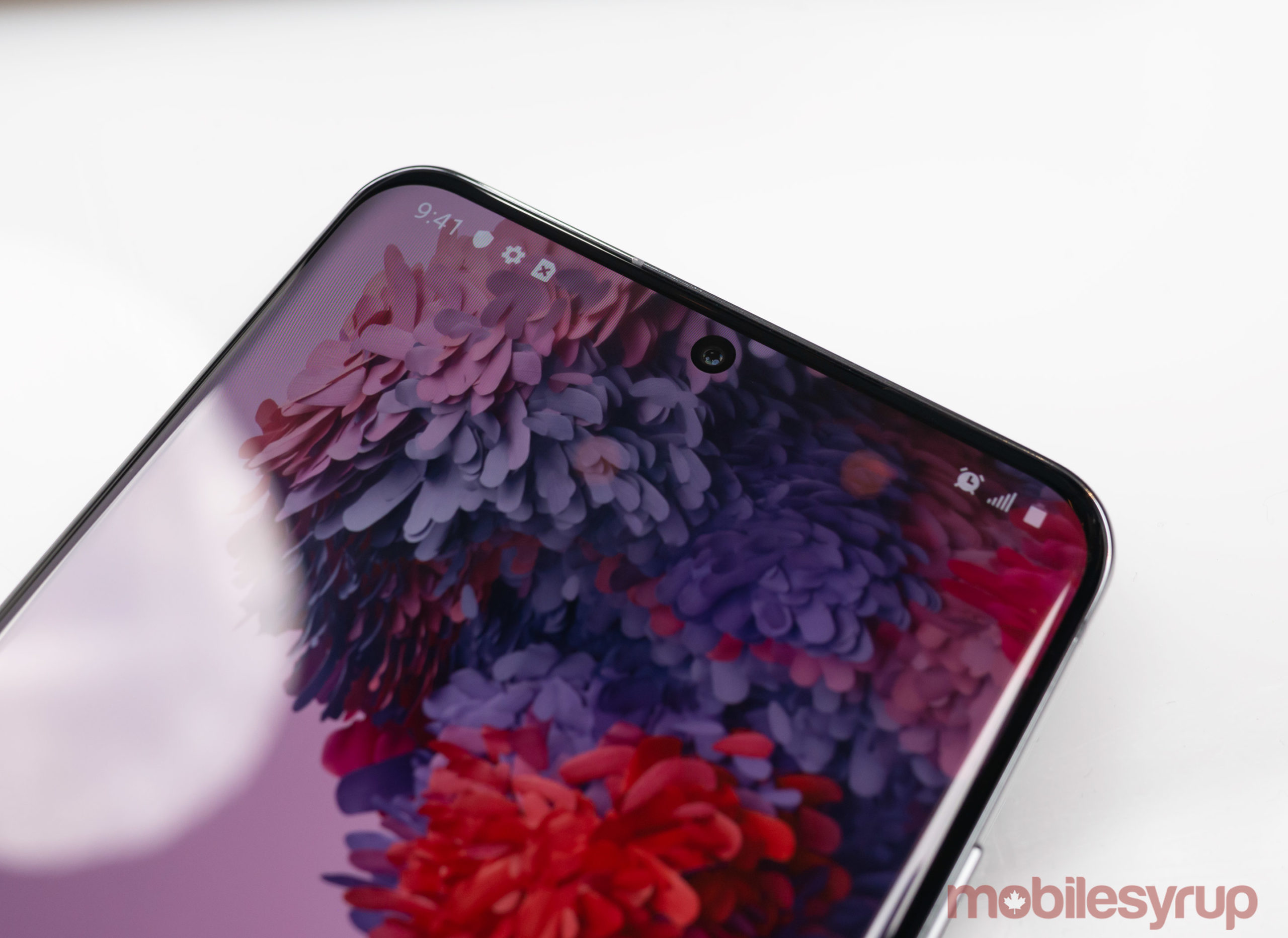
I don’t hate the S20 series’ camera bump, and in some ways, it’s reminiscent of a higher-quality version of the Pixel 4’s rear camera array. That said, it will likely go down as being one of the S20’s most divisive design choices.
It’s also worth noting that the 3.5mm headphone jack is gone, which means all those jokes Samsung made a few years ago about other manufacturers — particularly Apple — ditching the port definitely haven’t aged well. Samsung, as expected, now includes USB-C headphones in the box.
There’s a lot to still test out with the S20 series, but so far, I’m impressed with the new features Samsung has to offer this year, particularly the camera upgrades. I am a little concerned that the S20 Ultra is a little too large given that during my brief time with the phone at the hands-on event it already felt unwieldy.
We’ll have more on the Galaxy S20, S20+ and S20 Ultra in the coming weeks.
The Galaxy S20 series is set to be available for pre-order on February 11th. Pre-orders before March 5th get you a free pair of Galaxy Buds+ wireless earbuds.
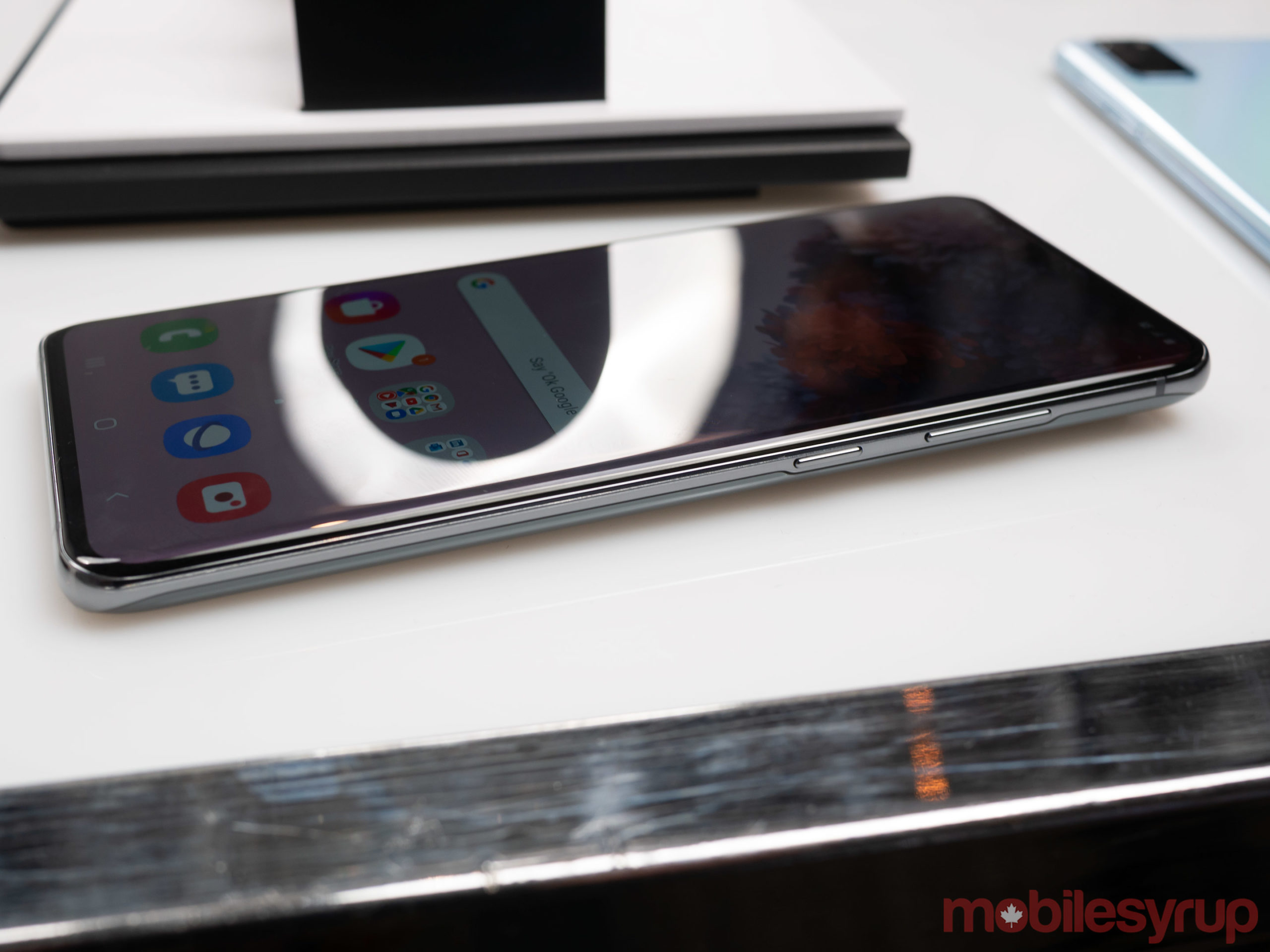
The Galaxy S20 is available in Cosmic Grey and Cloud Blue with 128GB of storage and 12GB of RAM for $1,319 CAD. The S20+ is releasing in Cloud Blue and Cosmic Black in 128GB with 12GB of RAM for $1,579 CAD, as well as 515GB of storage with 12GB of RAM for $1,779 in Cosmic Black only.
Finally, the S20 Ultra is releasing in Cosmic Grey and Cosmic Black with 128GB of storage and 12GB of RAM for $1,849 and 512GB of storage with 12GB of RAM for $2,109 in Cosmic Grey only. The Cosmic Black S20 Ultra is a Samsung Store exclusive.
The S20, S20+ and S20 Ultra will launch at retail on March 6th.
MobileSyrup may earn a commission from purchases made via our links, which helps fund the journalism we provide free on our website. These links do not influence our editorial content. Support us here.

